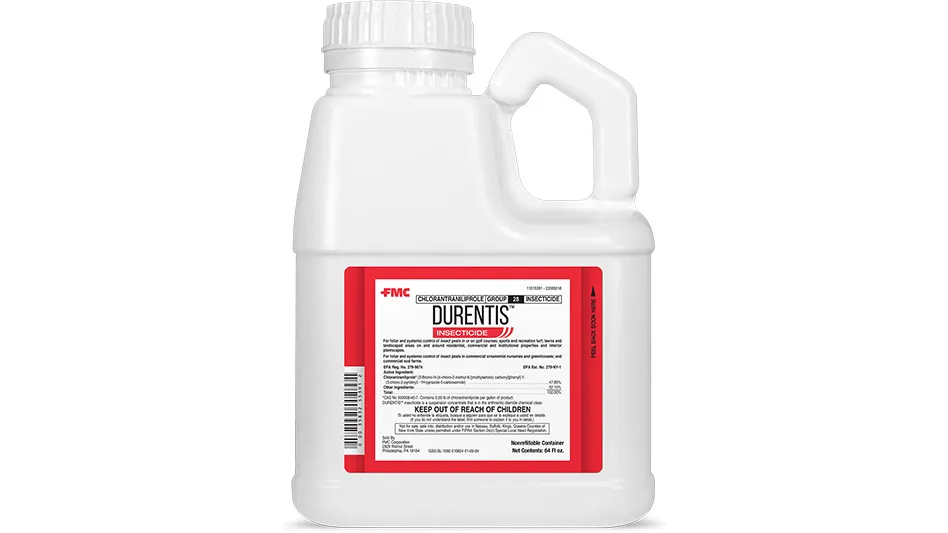
When it comes to autumn, it’s all about recovering from summer stress for turfgrass. “For most lawns, there’s damage by summer’s end,” says Pete Landschoot, PhD, professor of turfgrass science at Penn State. “Your focus should be on getting the turf healthy and thick again before going into fall and winter.” Here’s how to make it happen:
Watch out for disease.
Not all lawns require fungicide every year. But for clients whose lawns have chronic issues with disease, White includes two to three fungicide applications in the annual program. “We prefer to prevent it in the first place,” says Gerry White, owner/president of pH Lawn Care on the North Shore of Massachusetts.
For warm season grasses, fall fungicide applications are helpful, particularly for centipede and zoysia. “We’re moving into that time of year when the grass is not growing aggressively,” says Clint Waltz, PhD, extension turfgrass specialist at the University of Georgia’s Turfgrass Research & Education Center. “If it’s dry, things are fine. But if it’s moist and warm and the growth is slowing, the conditions are prime for diseases such as large patch. Then the grass is sick moving into dormant season and doesn’t recover well.”
While cool season species often grow out of disease this time of year, warm season typically don’t. “Affected turf will be slow coming out of it next spring,” Waltz says. “Those areas won’t green up as soon as the rest of the lawn next year.” Typically, what’s recommended is one to two applications of fungicide from mid to late-September to October. Using a 30-day residual fungicide will get you through to mid-November.
Keep an eye out for pests.
White says chinch bugs appeared in his region later than normal. White and his technicians spot-check lawns throughout the season because, otherwise, the typical six-week rotation between applications is too long to wait if a problem pops up. “It’s got to be treated immediately if an issue is spotted,” White says.
In some parts of the country such as the Southeast, armyworms are active in fall under the right conditions. “Weather plays a part, and the number of tropical depressions changes the population from year to year,” Waltz says. “These should be treated because they can march across a lawn in a matter of four to five days. Halt the problem, and the grass often rebounds before dormancy.”
For fall grubs, watch for animals like crows and skunks digging around or signs there are severed roots. If you see signs of an infestation, be proactive about application next spring. This year’s damage is already done.
Aerate and overseed lawns.
White says his company actively sells aeration and overseeding by passing out a notice about the services with the summer application. “It’s not the be-all, end-all to fix a lawn, but the new grasses we’re using have better tolerance to diseases and pests,” he says. White says the minimum he charges for the services is $300.
Andrew Tomberlin, owner of TomberLawn in the Greater Charlotte area, began offering lawn aeration and overseeding when his mowing customers started asking about it. “By mid-summer, I get the word out to my customers that it’s time to start thinking about fall renovations,” says Tomberlin, who typically begins these services in late September through most of October. “I’ll do at least two passes on a lawn. If it’s compacted and has a lot of bare spots, I may do a few more.”
Tomberlin suggests watching your timing for aeration. “I don’t want the lawn to be soaking wet,” Tomberlin says. “I like to have a nice rain shower, and then do the aeration and overseeding the next day or so. If it’s too wet, you leave ruts in the lawn.”
Manage fall applications appropriately.
For warm season grasses, let the grass follow environmental cues and go into dormancy naturally. Avoid putting down nitrogen past Sept. 1 because you don’t want juvenile growth as you go into winter, Waltz says.
Cool season grasses need to be fertilized as they kick back into gear. If you’ve overseeded, hold off on broadleaf weed control until the seedling grasses have been mowed a few times, Landschoot says. If herbicide is needed for more stubborn perennial broadleaf weeds, such as ground ivy and wild violet, wait to put it down until after the first frost when the plants will pull back sugars into the crowns and stolons, taking the herbicide with it. It’s also important to consider the overall health of the soil. White’s company performs soil testing for clients every three years for a small fee. “The more scientific we are about this, the better the results and the healthier the soil is,” he says. “If the soil isn’t happy, the lawn isn’t happy.”
The author is a freelance writer based in the Northeast.
Latest from Lawn & Landscape
- Landscape Workshop acquires Cut Above Enterprises
- Scythe debuts new generation of M.52
- New identities
- Ruppert promotes Anderson to director of talent acquisition
- Fleet on the Street
- Man in the mirror
- EverSmith Brands appoints Ken Hutcheson as its new CEO
- Manitou unveils new Woodcracker tree saw with grapple





